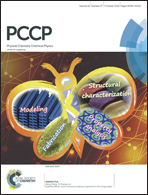The ZnSn(OH)6 nanocube–graphene composite as an anode material for Li-ion batteries†
Abstract
ZnSn(OH)6 (ZSH) nanocubes with a uniform size of 40–80 nm were synthesized by using a simple hydrothermal route and then combined with graphene sheets (rGO) via the electrostatic interaction. The formed composite of ZnSn(OH)6 nanocube–graphene (ZSH–rGO) was used as an anode material for Li-ion batteries and it exhibited significantly enhanced electrochemical performance. For instance, a capacity of 540 mA h g−1 at 500 mA g−1 was retained after 40 cycles.


 Please wait while we load your content...
Please wait while we load your content...